Sustainability, resilience and innovation in focus at EECS’s Research & Impact Day
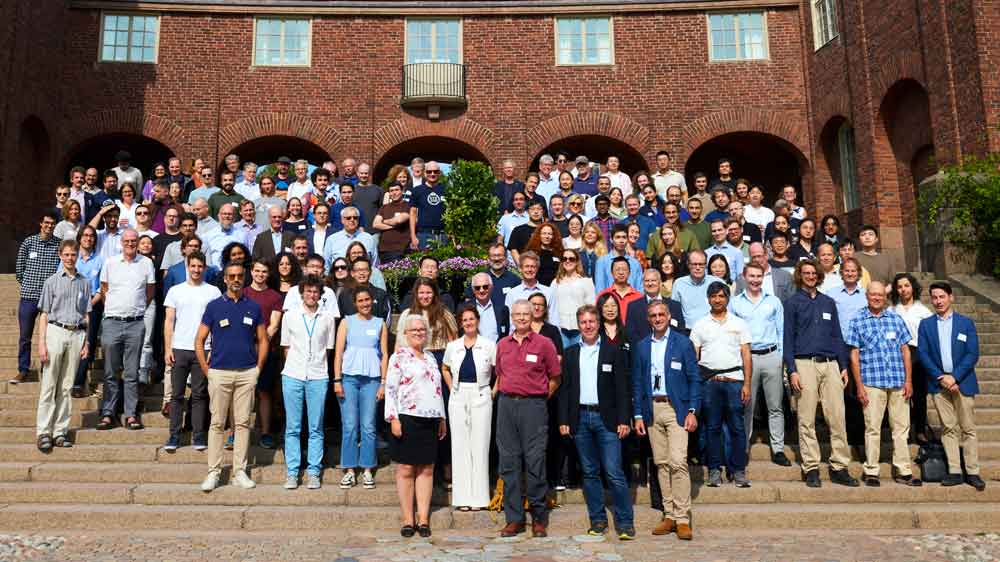
EECS’s Research & Impact Day was held at the end of August, and brought together researchers and doctoral students from the School of Electrical Engineering and Computer Science (EECS) to share insights on current research and inspire new ideas and collaborations under the overall theme of sustainable development.
The Research & Impact Day is the brainchild of Lina Bertling Tjernberg, Deputy Head of School, who specialises in research conditions and the impact of research. She welcomed the more than 200 participants together with Head of School Ann Lantz.
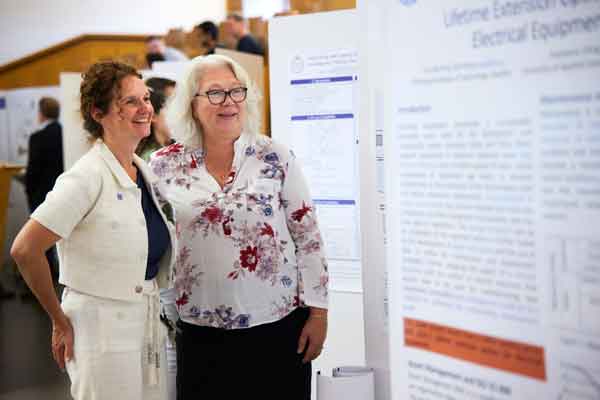
The aim of the day is to inspire researchers at the school to discuss their research, share results and get to know each other's research environments, says Lina Bertling Tjernberg. All in line with efforts to achieve the UN Sustainable Development Goals.
“We already have well-developed forums for teachers to discuss and share their knowledge in pedagogy. Now we are starting an annual event focusing on the researchers where we give them the opportunity to find more strategic collaborations by being inspired by each other," says Lina Bertling Tjernberg, Deputy Head of School.
The day began with a networking lunch and a poster exhibition in which some 20 research projects participated. The programme for the day included four themes on which representatives from EECS departments shared details of research projects and challenges associated with them.
Representatives from SEK, Svensk Elstandard, were present during the day to tell more about their work to develop international standards.
“It is important for us to find more ways to meet researchers in different areas and offer them to participate early in the development of new standards. Right now we are working with the field of quantum technology, which is still in its infancy,” says Felix Sonebäck, project manager at Svensk Elstandard.
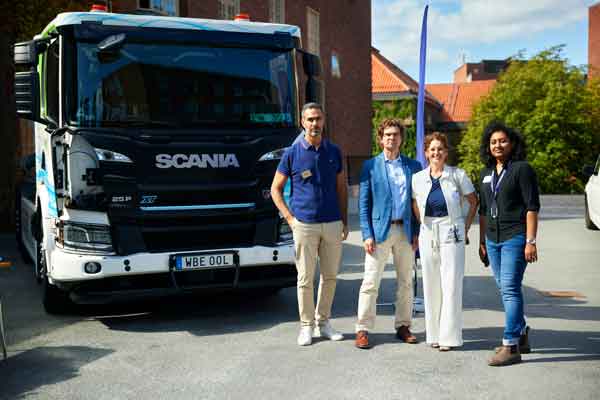
Several representatives from Scania were also present, along with a electric truck specially developed for regional and inner-city traffic. Parts of the technology were also shown to interested parties, such as battery modules and electricity conversion systems. The entire vehicle is built to fit Scania's regular modular system to offer easy transition to electric operation.
First, there was a look back at KTH’s 200-year history under the guidance of Leif Handberg, Associate Professor in Media Technology.
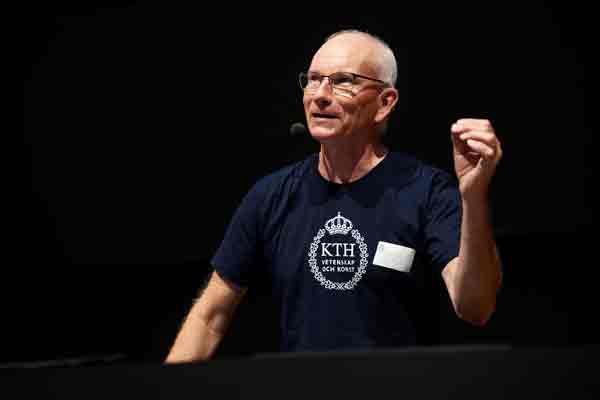
Global outlook
The first of four panel talks was entitled “Global Outlook: Resilient and Secure Society, Energy Supply and Standards”. Bo Normark, Industrial Strategy Executive EIT InnoEnergy, opened the session by providing insights into the transformation of the global energy system, highlighting the growing importance of electricity. He said that Europe is expected to double its electricity consumption by 2050, with a significant proportion coming from renewable sources. Flexible resources, such as vehicle charging and battery storage, will be critical to managing this increase in demand, he said.
Next, Leila Manshaei, Hitachi Energy Global Manager HVDC System Performance, spoke about the challenges and opportunities of integrating renewable energy into the European electricity grid. She highlighted the growing need for interconnectivity and advanced technologies such as HVDC to ensure stable and efficient systems.

Panellist Viktoria Neimane, Senior Vice President at Svenska Kraftnät, gave a national perspective in terms of the challenges faced by the Swedish energy system. She emphasised the increasing demand for electricity, the need to expand and modernise the electricity grid, and the challenges of integrating renewable energy sources.
Thomas Korsell, CEO of Svensk Elstandard, set out the organisation’s role in the international sphere. He encouraged everyone to take part in standardisation efforts and explained how individuals can play a key role in shaping industry standards.
Korsell was followed by Staffan Norrga, docent and founder of Scibreak, who described Scibreak’s journey. The company was founded in 2014 with the aim of developing a more competitive technology to break high AC or DC currents with high return voltages within a matter of milliseconds. Scibreak was acquired by Mitsubishi Electric in 2023.
The last speaker of the session was David Olgart, Director of Cybercampus Sweden, who gave a talk about Sweden’s initiative to strengthen its cyber defences. Cybercampus brings together universities, authorities and companies to conduct research, innovation and education in cyber security. Through co-operation in the EU and NATO, the body seeks to attract more talent to Sweden and strengthen its international profile.
More robots in society
The day’s second panel, “Autonomous Systems and Wireless Communication and Social Competent Machines”, was opened by Professor Danica Kragic Jensfelt, Director of the Centre for Autonomous Systems, who gave an introduction to the field of autonomous systems. KTH has conducted research in this area for many years, including on social robots. She emphasised the considerable demand that exists for autonomous systems in a variety of applications. Irrespective of whether research in this area develops robots for healthcare, manufacturing or the fashion industry, the technology will be used to a greater extent, she said.
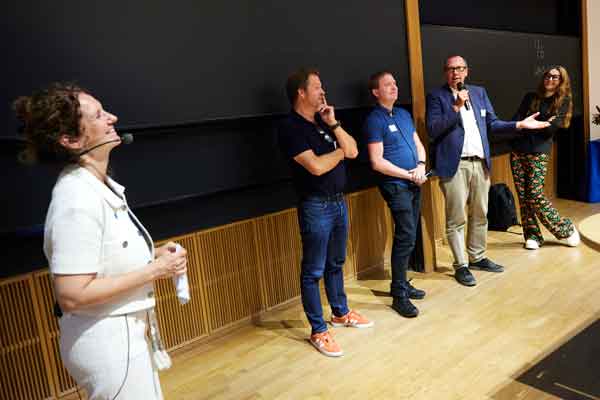
Professor Bo Wahlberg, Director KTH WASP, Wallenberg AI, Autonomous Systems and Software Program, then spoke about the importance of attracting more doctoral students to EECS. He drew a comparison between WASP and EECS in terms of the impact doctoral students have on society. Doubling the number of doctoral students admitted to EECS would be an important step to take, he said.
“About 30 percent of the total PhD education in Sweden comes from KTH and one third of that comes from the EECS School. I see a huge opportunity to increase the PhD education at our school, “says Professor Bo Wahlberg, Director KTH WASP.
Next, Professor Emil Björnson gave a presentation about the development of wireless communication. He highlighted the importance of resilient and sustainable wireless networks to support the increasing digitisation of society, and to withstand cyber-attacks and common human errors. Björnson now heads the new Swedish Wireless Innovation Network, SweWIN, which works on sustainability and energy efficiency in wireless communication.
Lastly, Jonas Beskow, professor in speech communication, highlighted the importance of developing machines to communicate on human terms such as using speech, gestures and other non-verbal signals. He outlined the development of social robots and models that generate coherent speech and gestures. He is currently working on a project that aims to automate translation between sign language and speech.

The panel also had the opportunity to offer advice to the government on its work on Sweden’s AI strategy. The panel stressed the prominent role AI will play in teaching and research. It is therefore important to identify which areas AI will have the greatest impact, and in which areas where it will have less of a role to play. The future needs AI experts and people with other expertise who can apply AI where it is useful.
Wireless networks in focus
The third panel, with the title “Internet of Things, Networked Systems, Decision Control and Imaging Data”, was opened by Carlo Fischione, professor in Internet of Things, who shared insights about the complexity of wireless communication networks and the integration of machine learning to manage them. He highlighted the need for new algorithms to address the limitations of wireless networks.
Panos Papadimitratos, professor of network security, then spoke about the security and privacy challenges of future wireless network systems, including the need for scalable infrastructure for public “keys” and protection of location-based services.
The third panel speaker was Dejan Kostic, professor of internet technology. He shared insights of his previous work on improving the performance of today’s internet servers with better packet handling. He is now working on how to democratise the use of AI by reducing the vast amount of resources today’s AI models require in terms of energy and computing power. He hopes his work will one day result in being able to offer every child on the planet their own AI mentor.
Dimos V. Dimarogonas, professor of control engineering, then spoke about Smart Mobility Lab’s work to develop drones and autonomous vehicles. The next step in these efforts is to establish an underwater laboratory for robots.
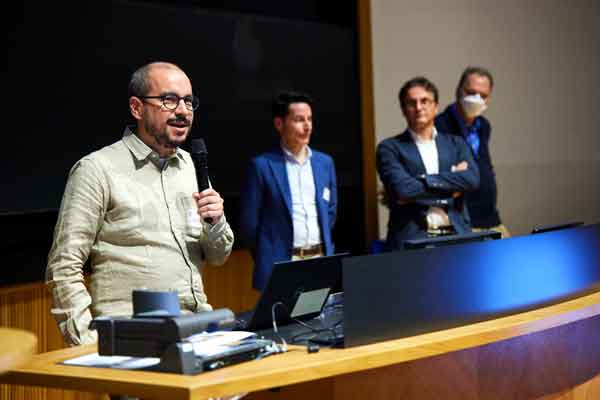
He was followed by Saikat Chatterjee, lecturer in Information Science and Engineering, who talked about his work to develop new diagnostic techniques for healthcare. This includes running projects to develop AI systems that detect infection before they present in patients.
Lorenz Roth, researcher at the Division of Space and Plasma Physics, rounded off the panel by sharing details of research using the Hubble telescope to study Jupiter’s northern auroras. He is also studying the role of Alfvén waves in transferring energy from the moon Io to Jupiter.
Important research infrastructures
The last panel discussion of the day was on the theme “Energy Efficient Computing, Electronics, Microsystems and Microwaves”.Jörg Conradt, lecturer in computational science and technology, opened the session by highlighting the energy inefficiency of today’s AI systems and proposed neuromorphic computing as a solution. His lab focuses on creating energy-efficient computing systems for robots, inspired by the human brain.
This was followed by a presentation of the Electrum laboratory in Kista by Per-Erik Hellström, professor and Director of the KTH Semiconductor research centre. He described the lab’s work on silicon technology, microsystems and high-voltage devices by emphasising the lab’s open collaborative environment and well-established industry collaborations.
The next presentation was given by Joachim Oberhammer, professor of micro- and nanosystems, on his work with high-frequency integrated systems. His lab works on applications for terahertz communications to engineer systems used in everything from medical devices to wireless communication technology.
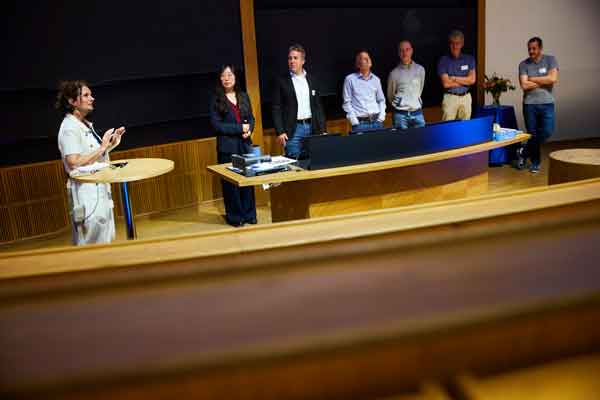
One of the resources that Oberhammar uses is the KTH Antenna/Microwaves Lab. Oscar Quevedo Teruel, professor and Director of the Antenna/Microwaves Lab, spoke more about this and highlighted several collaborations with national and international companies. He stressed the importance of basic understanding of technology to create revolutionary designs.
Another important research resource was highlighted by Patrick Norman, Director of the PDC Center for High Performance Computing. He explained how the centre supports simulations that require large amounts of computing power, as well as planning for the next major upgrade of the computer system, which is already among the most effective in Europe today.
Last up was Qianwen Xu, researcher and Director of the KTH Intelligent Sustainable Grid Lab, which focuses on advanced control, optimization and new AI methods to improve the stability and resilience of power grids. The lab’s goals include developing new platforms to integrate renewable energy into the electric grid by improving stability, for example.
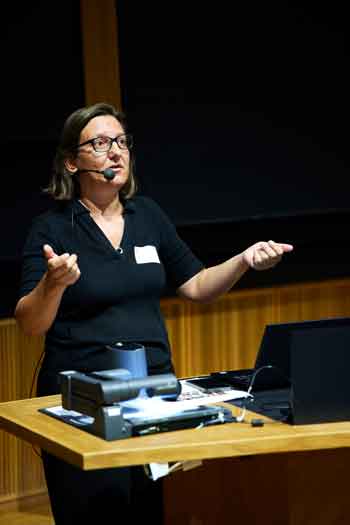
Sustainable perspective
Finally, Sandra Pauletto gave an insight into her research on how sound can be used to embody a kind of sustainability concept for our electricity use. One of her research projects, supported by the Swedish Energy Agency, is called Sound for Energy, and includes several interactive prototypes. These include a shower that only works if you sing, and a blanket that amplifies the feeling of warmth through sound. And a musical instrument that can show which energy sources are the largest in different countries.
“The point is the dialogue that these people have around the instrument. Through sound, they can explore their own knowledge of our energy consumption in relation to sustainability,’ says Sandra Pauletto, lecturer at the Division of Media Technology and Interaction Design.
EECS Research & Impact Day wrapped up with an award ceremony for the best poster which was entitled “NCS neuro computing systems”. The poster showed how autonomous systems can be built with algorithms inspired by the human brain. The entry was submitted by doctoral students Jens Pederson and Juan Romero, students Harini Sudha and Emil Jansson, and professor Jörg Conradt.
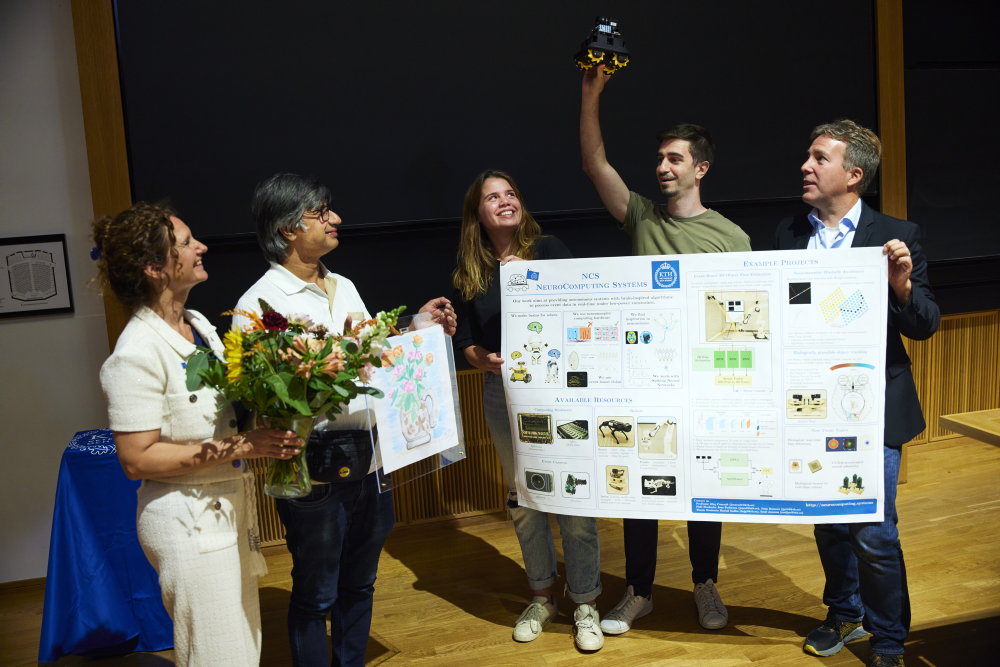
Here you can find the full program for the EECS Research & Impact Day with links to all presentations.
